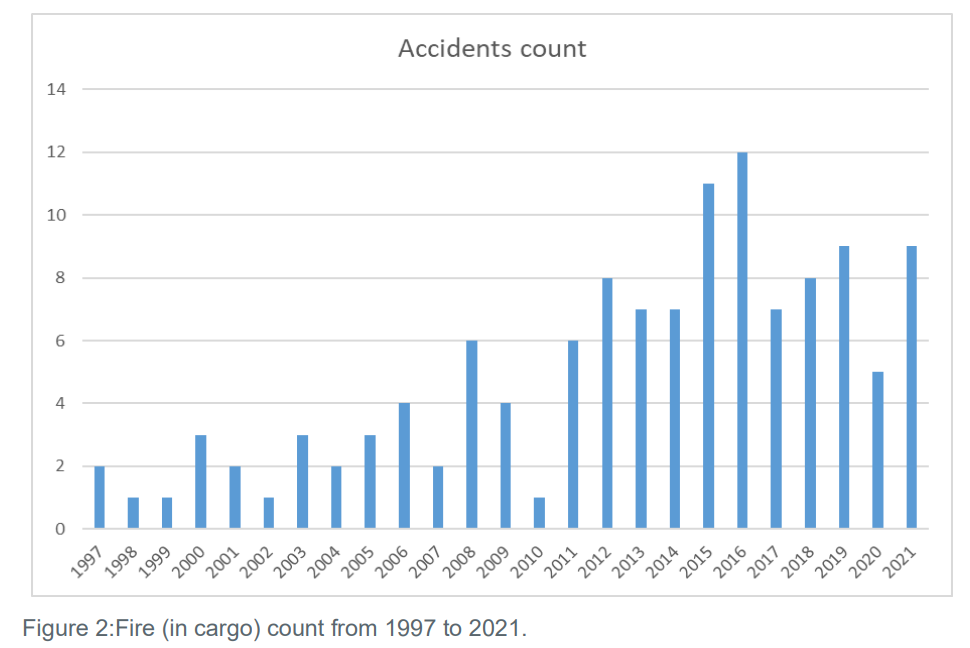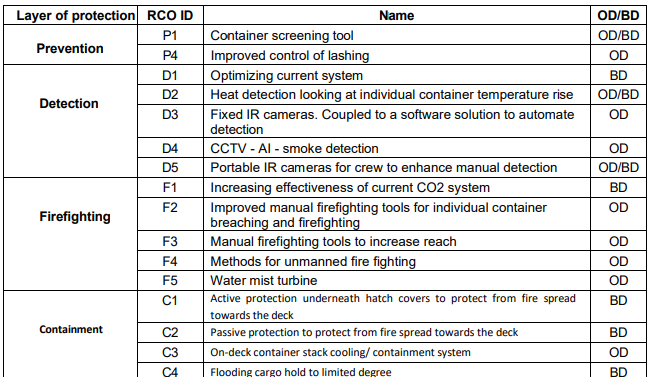Based on a safety risk study on containerized cargo fires, the European Maritime Safety Agency (EMSA) has released the CARGOSAFE study, with the goal of identifying cost-effective risk control options for cargo fires, dealing with the dimensions of the problem for both existing ships and newbuilds.
The CARGOSAFE study examines the risks associated with fires on container ships and evaluates measures to control these risks in terms of prevention, detection, firefighting, and containment. CARGOSAFE follows the Formal Safety Assessment (FSA) structure for use in IMO rule-making process. A dedicated risk model has been developed to assess the risks for the loss of life, cargo, ship, environment, and salvage. Finally, the study presents the results of a cost-effectiveness assessment (CEA) of the identified Risk Control Options (RCOs) for three generic ship types (feeder, twin island, single island).
Definition of the problem
The high-risk areas which need to be addressed according with each protection layer are:
- Prevention: reduce the fire occurrence, particularly in relation to the misdeclaration/undeclaration or dangerous cargo.
- Detection: detected sufficiently early to try a local extinguishment by crew or release a first shot of extinguishing agent.
- Firefighting: extinguishing or at least control the fire in the hold of origin for a long period of time.
- Containment: control the fire at the bay of origin or the bay above the hold of origin.
Fires on containerships, in particular originating in containers, have gained increasing visibility in the last five years, even though cargo fires are already a known characteristic accident occurrence for such ship types. The increased attention to cargo fire accidents is well aligned with an increase in the size of these ships, with a fleet which has seen a close to 30% capacity increase in the VLCS and ULCS categories over the last two years.
Previous fire accidents onboard can be attributed to the cargoes carried, their misdeclaration or non- declaration of dangerous goods, the technical design and specifications for containerships, the compact pattern of container stowage in containerships and the old and sometimes inadequate technical provisions for fire detection, fire location and firefighting on deck. This situation persists despite the amendments to SOLAS regulation II-2/10 in 2014 (resolution MSC.365(93)), where the additional equipment of containerships with mobile water monitors and at least one water mist lance was made mandatory for new buildings from 1 January 2016 onward.

Risk Reduction
- Container screening tool
- Improved control of lashing
- Improving current smoke detection system
- Heat detection
- Fixed IR cameras
- CCTV – AI – smoke detection
- Portable IR cameras for crew to enhance manual detection





























































